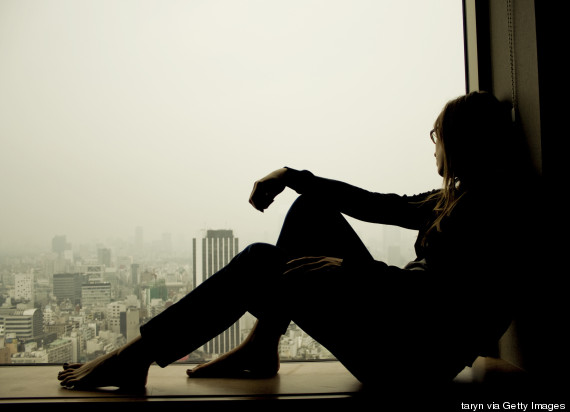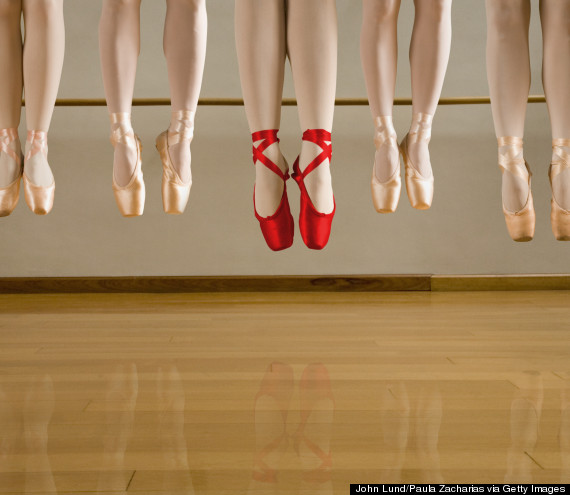What’s your take on shame? Check out Brene Brown’s perspective
Posted by Lee-Anne Ragan | Filed under Change management & wellness
 One of my many interests is change. As in how do you effect it, well, effectively?
One of my many interests is change. As in how do you effect it, well, effectively?
As my son & some of his friends were gathered for dinner last night they were talking about their experiences being camp counsellors this summer. It was uber interesting listening to their take on what to do with kids who weren’t listening or otherwise doing what they wanted them to do. Alas I’d love to say that they worked to effect change with empathy & compassion but it wasn’t always the case (they’re teenage boys after all).
But it got me thinking about my shero Brene Brown & a recent post of hers on shame.
Some folks use shame in bucketfuls to effect change. Brene includes two examples of marketing campaigns (one on obesity & one on teen pregnancy) in her fabulous post, where she says:
Shame diminishes our capacity for empathy.
Shame corrodes the very part of us that believes we are capable of change.
She goes on to define shame as “the intensely painful feeling or experience of believing we are flawed and therefore unworthy of love and belonging.” “We might feel justified in belittling and humiliating people, but it makes the world a more dangerous place.”
What do you think? What’s your perspective on shame?
~~TGIF- each Friday I rejig & re-post a blog entry from my www.life-lenses.com blog, which is about enhancing our perspective & worldview.~~
Tags: brene brown, shame, Wellness
3 Beyoncé Songs That Sound Totally Different When Spoken
Posted by Lee-Anne Ragan | Filed under Communication, Creativity & innovation
This is delicious & delightful. I first say it on Upworthy.
Beyonce has declared herself a feminist, which some people totally love and some people don’t understand — often because they can’t see past the fact that she totally owns her sexuality on stage. So let’s take away the fantastic glittery skin-tight costumes, sexy body, and ah-mazing dance moves, and just listen to the lyrics to some of her best songs with an open mind. Here they’re delivered as spoken-word poems, and by listening to them this way, you might find it easier to hear the empowering feminist messages in her songs too.
Tags: creativity, Nina Millin, upworthy
Perspective changing wish from a fairy godmother
Posted by Lee-Anne Ragan | Filed under Creativity & innovation
Love love love this perspective enhancing cartoon from Mighty Girl.
Enuf’ said.
~~TGIF- each Friday I rejig & re-post a blog entry from my www.life-lenses.com blog, which is about enhancing our perspective & worldview.~~
Tags: humour, mighty girl
30 Feminist Lessons in 30 Years
Posted by Lee-Anne Ragan | Filed under Diversity & culture

The Christmas holidays are soon here. What better gift than 30 years of lessons from feminism. (This post is from the Huffington post.) Which one is your favourite?
I recently crossed over into my 30s. The lead-up to the day was a slurry of thoughts and feelings about this huge milestone, marked by bursts of self-reflection and a quick skip down that list of classic questions about “where I am” in my life. I thought it prudent to try to gather this slurry into a collection of lessons best learned over the last three decades.
1. There is no choice without access. Women don’t have the right to safe abortion if there are no clinics. Women don’t have the right to vote if voter ID laws marginalize them. Women don’t have the right to be in public spaces if there is the omnipresent threat of physical and sexual violence. This is structural oppression, and (unfortunately) we need to promote access to these most basic rights.
2. Support women who lead. Hillary. Ruth + Sonya + Ellen. Michelle. Elizabeth. Tammy + the feminist women of the Senate. We need more in all sectors.
3. The personal is political.
4. Ask for a raise. I have my critiques of Lean In, but the main and most helpful lesson I extracted from those pages was that you have to know your worth, ask for what you deserve, and fight until you get it.
5. Rock that body of yours. No matter how much I always knew in my brain that my body was perfect, it definitely took convincing to get there in practice. Women are supposed to be small, and inconspicuous, and graceful, right? Whether you’re trying to find a seat on the subway, or standing in line to buy movie tickets, or at yoga next to Bendy McBenderson — you’re an amazon woman. A warrior princess. A crazy goddess. Your body is amazing, and nothing should make you feel otherwise. That space you’re in is yours, so own it. And while we’re all in the process of reorganizing pop culture as we know it, turning upside down the very same structures that define “beauty” very narrowly and make women feel “less than,” these are the small battles we fight, and our bodies are the battlefield.
6. Know your privilege. Understand it. Critique it. Don’t take it personally. Then reject it.
7. Respond to street harassment. Most men who feel comfortable calling out disgusting things to you on the streets are actually quite embarrassed when you ask them how they would feel if a man said that to their sister or girlfriend or mom. Embarrass them. I’m not sure many of them would really think otherwise if you don’t at least try. And while it will be nice to live in a world where respect for women in public spaces is the norm, this is the interim band-aid.
8. Women’s health clinics need you to show up, because the anti-choicers show up and harass women. They call them names. They tell them lies. They shame and horrify them. And it’s totally legal, and absolutely terrifying for women to experience as she’s going to see her DOCTOR. It’s not ok. Be like these guys! They nailed it!
9. Become trans-literate. To quote my smart friend V — “Feminists will be more powerful when we listen to the voices of trans activists directly.”
10. Reproductive justice is truly transformative. There’s a huge difference between being a reproductive health vs. reproductive rights vs. reproductive justice activist. Reproductive rights are basic human rights, and require a social justice approach if all women (and men) are to enjoy them.
11. Don’t read the comments. Because it’s not a safe cyberspace to have feminist ideals… yet. And while we still live in a world where it’s appropriate to leave rape threats in comments (BECAUSE THAT’S OK, RIGHT?!?!?), just ignore the trolls.
12. We need more men to identify as feminists, and truly mean it. Challenging rape culture, patriarchy, and inequality isn’t going to happen until we have allies, partners, and supporters who challenge their own privilege and subvert masculinity. Also, because…
13. …no, reproductive rights are NOT just a “women’s issue.” Last time I checked, women can’t just cook up a baby like an Easy Bake Oven cooks up a pink Bundt (although that would be cool…). There’s not a magical powder you mix with water, and a baby comes out. Men are involved in reproduction. Therefore, men should be involved in whatever family planning (or family non-planning) that suits the couple (obviously taking cues from his partner, because it’s her Easy Bake Oven, after all…).
14. Support feminist filmmakers. Two words: Obvious Child.
15. Speak up when people say stupid crap about feminism. People are uninformed. The Internet was rife with this the last few weeks, making it really clear that a lot of people don’t really know what it means to be a feminist. It’s not about your leg hair, or your last name, or your choice to stay home with your kids, or about liking men. It’s about equality, friends. As with any stupid crap people say about all kind of things, sometimes it’s really just about breaking it down and starting with the basics.
16. HOLY MOLY SELF-CARE. “Put the oxygen mask on yourself before helping small children.” If you short-circuit, burn out, tailspin out in a cloud of “need to rock back and forth in a dark room,” the movement suffers. Your brilliant brain is no longer shining for equality and justice. I know it feels futile sometimes. Ya gotta take a nap, and a bubble bath, and a sick day every now and again. There will always be stuff to do when you’re rested again.
17. Leave the bubble. We all have one: our comfort zone of people who think like us and who understand our views and our ethos and don’t make us feel like we have to explain our most basic principles. Time to leave the comfort zone. For me, it’s been about understanding critiques of white feminism, learning, and being better next time.
18. Sisterhood is not so global. Just because I’m a woman doesn’t mean I understand what it means to walk in the shoes of the woman standing next to me. We both experience gender inequality in its micro and macro forms, and owe it to each other to create space for those nuances and intersections.
19. Talk about sex. Sexual relationships should be so fun, and safe, and healthy, and interesting, and exactly what you want them to be. They should yield millions of orgasms and lots of fun for everyone involved, and one of the ways we do that is to make sure that sex isn’t taboo. And obviously, one way to break some of these taboos is to talk about sex. And not just sexual health, but pleasure. All the time (not just on Valentine’s Day). With your partner. With your friends. Good sex is a feminist issue.
20. Share your story. Your abortion story. Your rape story. Your birth story. Your addiction story. Your family story. It creates a safe space for others to do the same.
21. Never underestimate the power of a group of young, smart women determined to make change. Ever. I honestly believe that if I brought together all of the amazing young women I know into one room, the earth would crack open from the immense drive, power and grace they all emit into this world. And that’s amazing.
22. Take your daughter to work. And to marches. And to the polls. And to the library. And to the Hill. The message you are sending her is: You belong in all of these spaces, and can be whatever you want to be.
23. Thank your feminist mom (or mom equivalent) and her feminist friends. Even if you don’t have a feminist mom (or mom equivalent), she went through some CRAZINESS to get to today, so thank her anyway. Thank you Sue, and Morgan, and Rob, and Lynn. And thanks Anne — you’re a good one.
24. Call your Senator, Member of Congress, local policy-maker. They work for you. You pay their salary. They often do bonehead stuff that doesn’t represent you or your best interests (you = women), so hold them accountable.
25. Work with teenage girls. I can’t imagine how many people wanted to send me off to my own island when I was a teenager. What a nightmare. With the hormones, and the Backstreet Boys, and the glitter, and the time I stole your beer. (Sorry dad.) But teenage girls today have a struggle of a totally different magnitude. Sexting. Video footage of their rape that goes viral. Cyber bullying. Social media. See if you can be a mentor.
26. Your working mom friends are superwomen, and you should worship the ground on which they walk. Holy moly. The multi-tasking, and the lack of sleep, and the cheerios stuck to your pants all while maintaining professional prowess… There should be an award.
27. Read all of the feminist literature you read in college again. bell hooks does different things in your 29-year-old brain than it did in your 19-year-old brain.
28. Read the news. It’s really depressing. It usually makes me really sad for the world. But to develop a truly social justice lens, it’s imperative to see how the things happening in the world connect to one another. It’s all connected.
29. Gather. Convene. Brainstorm. Organize. Support. In the ’80s this was called consciousness raising. We gotta stick together.
30. And most importantly — KEEP IT UP. It all makes a difference.
Tags: feminism, huffington post, Lindsay Menard-Freeman
4 Step to Critical Thinking via Edudemic
Posted by Lee-Anne Ragan | Filed under Communication
 Life Lenses™ is all about peeling back the layers of perspective. Changing the view. Shifting the sands so new, previously unseen, patterns emerge.
Life Lenses™ is all about peeling back the layers of perspective. Changing the view. Shifting the sands so new, previously unseen, patterns emerge.
To do that requires critical thinking. Here’s some great tips on how to think critically thanks to Edudemic.
See the original post here. Quoted directly from that post are 4 steps to thinking critically:
Step 1: Knowledge
Identification and recall of information is key here. Answer the basic questions (Who, What, Why, Where, etc.)
Step 2: Comprehension
Organize your thoughts, select the facts, choose the ideas. Be able to interpret and paraphrase what you’re reading and learning.
Step 3: Application
Be able to use facts, rules, and apply principles. You should be able to find out information, solve problems, and give an example. This shows a higher level of understanding.
Step 4: Analysis
This is where the true learning really shines. Separate the whole topic or story into components / parts and pick each of these apart. Examine and then infer. Keep going! Do this for everything you’re hoping to learn about. You may just surprise yourself!
~~TGIF- each Friday I rejig & re-post a blog entry from my www.life-lenses.com blog, which is about enhancing our perspective & worldview.~~
Tags: critical thinking, edudemic
Oh Canada- this one’s for you
Posted by Lee-Anne Ragan | Filed under Diversity & culture
Even though I’m about as far away as you can get from Canada, without leaving the planet, my heart lives in Canada.
Thinking about home. Thinking about how the concept of home has changed since I’ve been living in Kenya. Thinking about what others think about my home. Thinking about culture.
Oh Canada, this one’s for you.
And this one …
~~TGIF- each Friday I rejig & re-post a blog entry from my www.life-lenses.com blog, which is about enhancing our perspective & worldview.~~
The intersection between creativity, human behaviour & effecting change – via Terry O’Reilly
Posted by Lee-Anne Ragan | Filed under Change management & wellness, Creativity & innovation

Photo Credit: TheAlieness GiselaGiardino²³ via Compfight cc
I adore the CBC podcast by Terry O’Reilly called ‘under the influence.‘ It’s technically about marketing but really it’s about the intersections between creativity, human behaviour & effecting change.
Here’s a fantastic example.
In Israel, radio stations got together with the Israel Cancer Association and did something highly creative.
8am is the highest peak of listenership on morning radio. More people tune in at that hour than at any other hour of the day. And as a result, advertisers pay the highest rates in that time period.
On October 30th, at 8:05am, radio stations in Israel did something they had never done before.
All morning shows broadcasted out of the right speaker only.
They did that to convey the idea of what it is like to lose one breast, to lose one part of a whole.
And to achieve maximum reach of that message, every radio station in the entire country silenced their left speaker simultaneously at 8:05am:
Source: YouTube
Every station assured their listeners they weren’t hearing a malfunction, that the one-channel broadcast was intentional to bring awareness to breast cancer, and every station urged women to get tested.
The project was called “The Day Radio Went Mono.” It generated tremendous awareness, and press in all other mediums wrote hundreds of stories about it.
But here’s the important part: The amount of help-line calls increased by 98%. And mammography testing increased by 24%.
Extraordinary results – generated by the creative use of radio.
Now how cool is that?!
Tags: breast cancer, cbc, change management, creativity, terry o'reilly
How to extend, apply & transfer learning from TEDxNairobi
Posted by Lee-Anne Ragan | Filed under Change management & wellness
 I’ve been having a hoot working with the TEDxNairobi folks to put into place a strategy to extend, apply & transfer the learning from the event.
I’ve been having a hoot working with the TEDxNairobi folks to put into place a strategy to extend, apply & transfer the learning from the event.
A WasTED World? TEDxNairobi throws a spotlight on waste in all its forms – Reduce, Revise &/or Reclaim!
By the time you read this I’ll have shared my strategy with the sold out crowd this past Saturday. You can take a peek at my quick strategy here.
It’s two-fold:
- We’ve been tagging related resources on delicious; check them out here. You can sort for what you want given the listed tags.
- I’ve put a ton of resources in a Google doc which you can see here. Easy peasy – everything’s in one place. And be sure when you’re poking around in there to take a look at the interactive document where you can share what you can do to Reduce, Revise &/or Reclaim.
So whether you were able to be there or not, please don’t waste any more time & get involved.
Tags: change management, learning strategy, tedxnairobi
Einstein’s Problem-Solving Formula, And Why You’re Doing It All Wrong
Posted by Lee-Anne Ragan | Filed under Conflict resolution, Creativity & innovation

Photo Credit: lrargerich via Compfight cc
This Fast Company article, by Drake Baer, caught my attention. It’s a Stop Life Lens’ delight.
Contemplation. Reflection. Analysis.
All soothing words to & strengths of a Stop Life Lens™. Too much efficiency (a.k.a. being hellbent on action) can stifle innovation. Check out the excerpts below or click on the full article above.
When asked how he would spend his time if he was given an hour to solve a thorny problem, (Einstein) said he’d spend 55 minutes defining the problem and alternatives and 5 minutes solving it. Which is exactly opposite of what the vast majority of executives today would do.
When we’re infatuated with efficiency, Phillips says, we let innovation die. By imprisoning ourselves in metrics, we don’t value the less quantifiable, more long-term aspects of value creation, like exploration, empathy, contemplation, and stillness. Since we’re conditioned to the thrills of fighting fires, firing off emails, and the validation that gives us, we feel starved of time. And our product development gets malnourished.
~~TGIF- each Friday I rejig & re-post a blog entry from my www.life-lenses.com blog, which is about enhancing our perspective & worldview.~~
Tags: drake baer, einstein, fast company, problem solving
18 Things Highly Creative People Do Differently (via Huffington Post)
Posted by Lee-Anne Ragan | Filed under Creativity & innovation
Love this post from Huffington Post. Here it is, edited for brevity. Read the entire article here. Here are 18 things highly creative people do differently. How many do you do?
1. They daydream.

Creative types know, despite what their third-grade teachers may have said, that daydreaming is anything but a waste of time.
2. They observe everything.
The world is a creative person’s oyster — they see possibilities everywhere and are constantly taking in information that becomes fodder for creative expression. As Henry James is widely quoted, a writer is someone on whom “nothing is lost.”
3. They work the hours that work for them.
No matter when it is, individuals with high creative output will often figure out what time it is that their minds start firing up, and structure their days accordingly.
4. They take time for solitude.

“In order to be open to creativity, one must have the capacity for constructive use of solitude. One must overcome the fear of being alone,” wrote the American existential psychologist Rollo May.
“You need to get in touch with that inner monologue to be able to express it,” he says. “It’s hard to find that inner creative voice if you’re … not getting in touch with yourself and reflecting on yourself.”
5. They turn life’s obstacles around.
Many of the most iconic stories and songs of all time have been inspired by gut-wrenching pain and heartbreak — and the silver lining of these challenges is that they may have been the catalyst to create great art. An emerging field of psychology called post-traumatic growth is suggesting that many people are able to use their hardships and early-life trauma for substantial creative growth. Specifically, researchers have found that trauma can help people to grow in the areas of interpersonal relationships, spirituality, appreciation of life, personal strength, and — most importantly for creativity — seeing new possibilities in life.
“A lot of people are able to use that as the fuel they need to come up with a different perspective on reality,” says Kaufman. “What’s happened is that their view of the world as a safe place, or as a certain type of place, has been shattered at some point in their life, causing them to go on the periphery and see things in a new, fresh light, and that’s very conducive to creativity.”
6. They seek out new experiences.

Creative people love to expose themselves to new experiences, sensations and states of mind — and this openness is a significant predictor of creative output.
7. They “fail up.”

Resilience is practically a prerequisite for creative success, says Kaufman. Doing creative work is often described as a process of failing repeatedly until you find something that sticks, and creatives — at least the successful ones — learn not to take failure so personally.
“Creatives fail and the really good ones fail often,” Forbes contributor Steven Kotler wrote in a piece on Einstein’s creative genius.
8. They ask the big questions.
Creative people are insatiably curious — they generally opt to live the examined life, and even as they get older, maintain a sense of curiosity about life. Whether through intense conversation or solitary mind-wandering, creatives look at the world around them and want to know why, and how, it is the way it is.
9. They people-watch.

Observant by nature and curious about the lives of others, creative types often love to people-watch — and they may generate some of their best ideas from it.
10. They take risks.
Part of doing creative work is taking risks, and many creative types thrive off of taking risks in various aspects of their lives.
“There is a deep and meaningful connection between risk taking and creativity and it’s one that’s often overlooked,” contributor Steven Kotler wrote in Forbes. “Creativity is the act of making something from nothing. It requires making public those bets first placed by imagination. This is not a job for the timid. Time wasted, reputation tarnished, money not well spent — these are all by-products of creativity gone awry.”
11. They view all of life as an opportunity for self-expression.

Nietzsche believed that one’s life and the world should be viewed as a work of art. Creative types may be more likely to see the world this way, and to constantly seek opportunities for self-expression in everyday life.
“Creative expression is self-expression,” says Kaufman. “Creativity is nothing more than an individual expression of your needs, desires and uniqueness.”
12. They follow their true passions.
Creative people tend to be intrinsically motivated — meaning that they’re motivated to act from some internal desire, rather than a desire for external reward or recognition. Psychologists have shown that creative people are energized by challenging activities, a sign of intrinsic motivation, and the research suggests that simply thinking of intrinsic reasons to perform an activity may be enough to boost creativity.
13. They get out of their own heads.

Kaufman argues that another purpose of daydreaming is to help us to get out of our own limited perspective and explore other ways of thinking, which can be an important asset to creative work.
“Daydreaming has evolved to allow us to let go of the present,” says Kaufman. “The same brain network associated with daydreaming is the brain network associated with theory of mind — I like calling it the ‘imagination brain network’ — it allows you to imagine your future self, but it also allows you to imagine what someone else is thinking.”
Research has also suggested that inducing “psychological distance” — that is, taking another person’s perspective or thinking about a question as if it was unreal or unfamiliar — can boost creative thinking.
14. They lose track of the time.
Creative types may find that when they’re writing, dancing, painting or expressing themselves in another way, they get “in the zone,” or what’s known as a flow state, which can help them to create at their highest level. Flow is a mental state when an individual transcends conscious thought to reach a heightened state of effortless concentration and calmness. When someone is in this state, they’re practically immune to any internal or external pressures and distractions that could hinder their performance.
You get into the flow state when you’re performing an activity you enjoy that you’re good at, but that also challenges you — as any good creative project does.
15. They surround themselves with beauty.
Creatives tend to have excellent taste, and as a result, they enjoy being surrounded by beauty.
16. They connect the dots.

If there’s one thing that distinguishes highly creative people from others, it’s the ability to see possibilities where others don’t — or, in other words, vision. Many great artists and writers have said that creativity is simply the ability to connect the dots that others might never think to connect.
In the words of Steve Jobs:
“Creativity is just connecting things. When you ask creative people how they did something, they feel a little guilty because they didn’t really do it, they just saw something. It seemed obvious to them after a while. That’s because they were able to connect experiences they’ve had and synthesize new things.”
17. They constantly shake things up.
Diversity of experience, more than anything else, is critical to creativity, says Kaufman. Creatives like to shake things up, experience new things, and avoid anything that makes life more monotonous or mundane.
“Creative people have more diversity of experiences, and habit is the killer of diversity of experience,” says Kaufman.
18. They make time for mindfulness.
Creative types understand the value of a clear and focused mind — because their work depends on it. Many artists, entrepreneurs, writers and other creative workers, such as David Lynch, have turned to meditation as a tool for tapping into their most creative state of mind.
And science backs up the idea that mindfulness really can boost your brain power in a number of ways. A 2012 Dutch study suggested that certain meditation techniques can promote creative thinking. And mindfulness practices have been linked with improved memory and focus, better emotional well-being, reduced stress and anxiety, and improved mental clarity — all of which can lead to better creative thought.
Tags: creativity, huffington post



